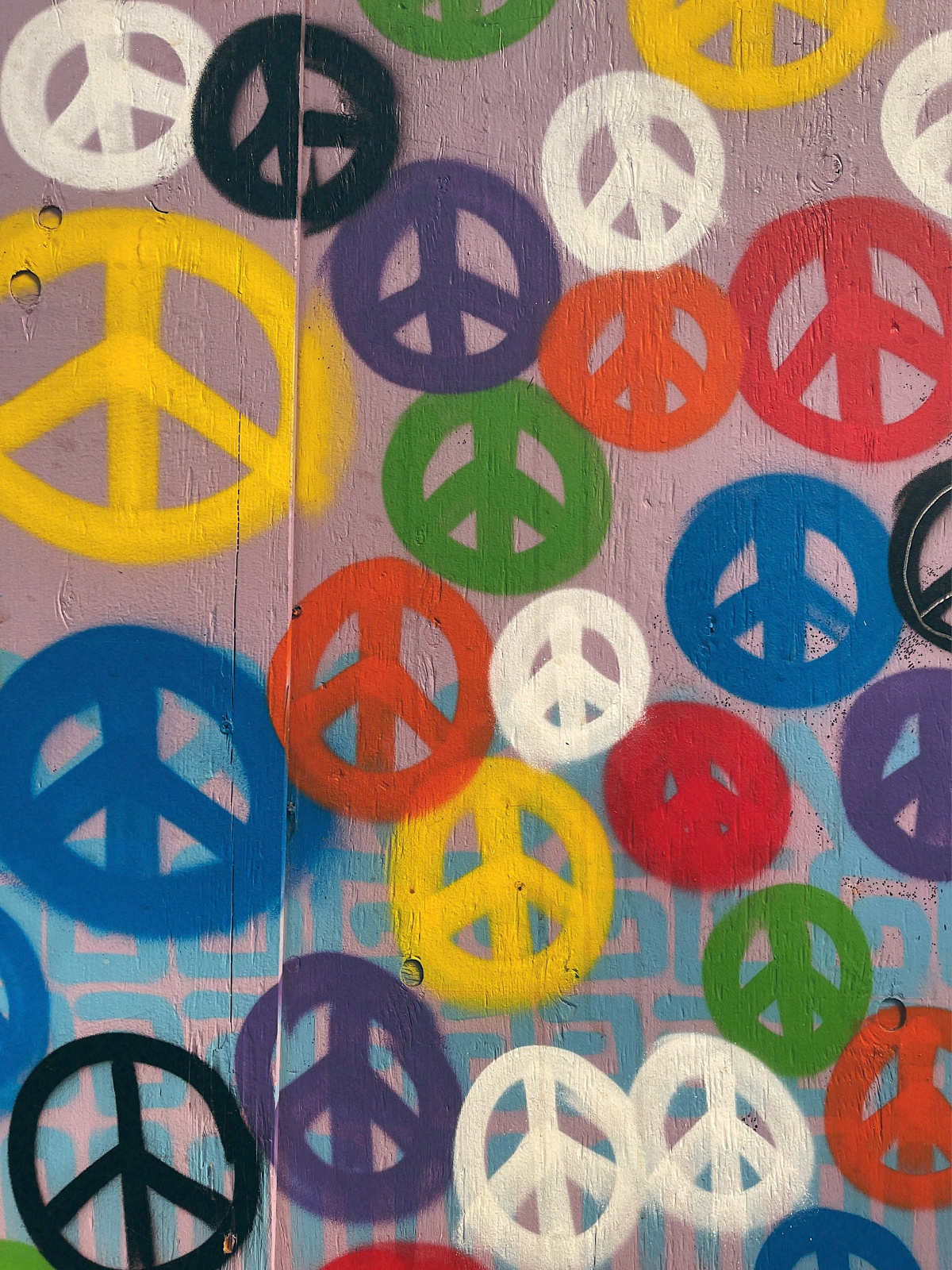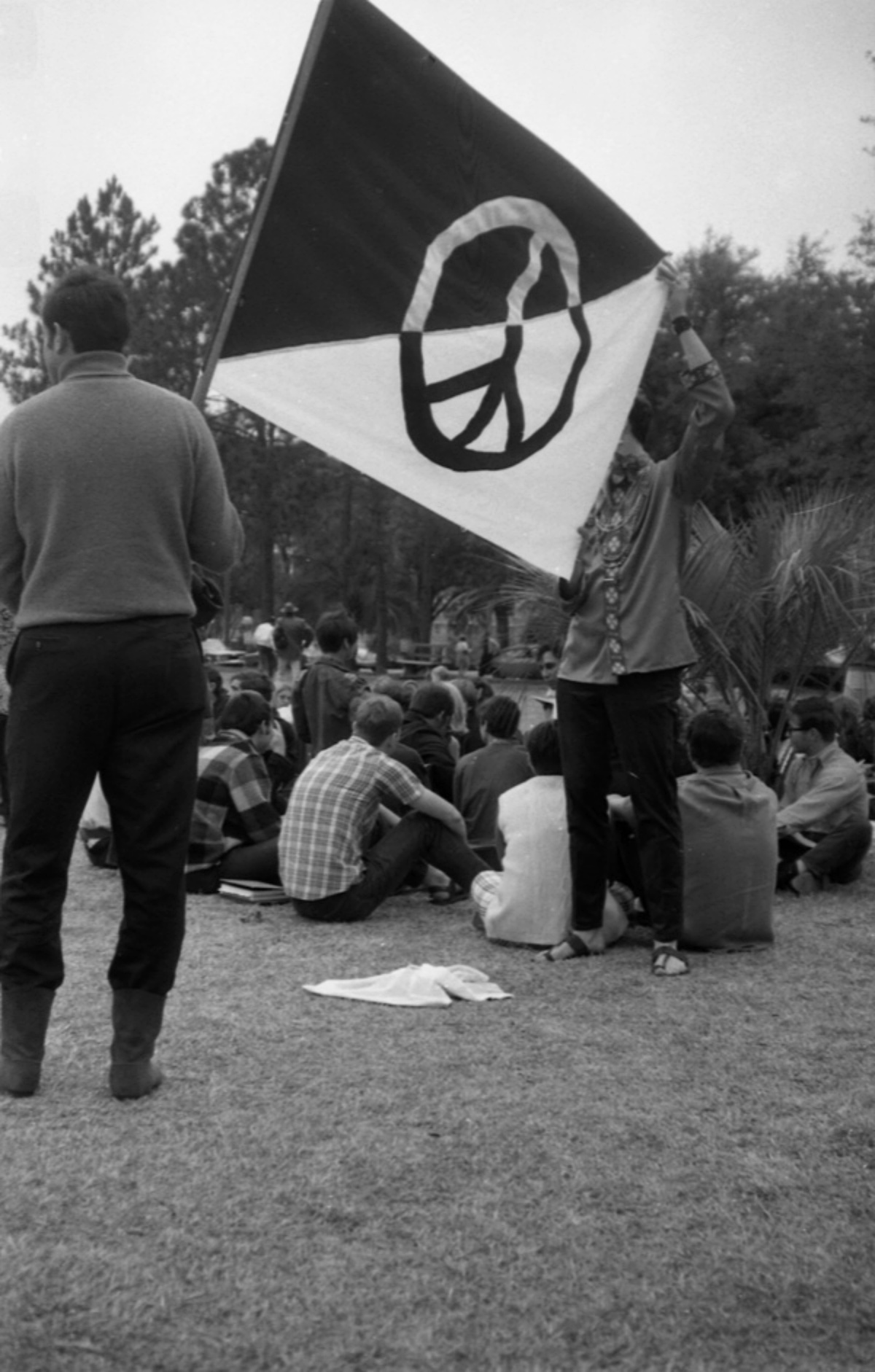The 1960s were filled with political activism and social trends that bled into the following decades. Protests for peace, equality, and freedom were making headlines around the start of US involvement in the Vietnam War in 1965. But, many of the sentiments that came with the hippies and pacifists actually were created in the 1950s. It was during the same decade that I Love Lucy first aired that the symbol we associate so strongly with the 1960s was actually made.

Some people believe that the peace sign we know today, the one that’s been made into jewelry and used on countless protest signs, was meant to be a broken cross. But, it was actually created in 1958 by anti-nuclear arms activist, Gerald Holtom, for the UK group, British Campaign for Nuclear Disarmament.
The lines are based on semaphore symbols, traditionally made using 2 flags held at different angles. These shapes have been in use for centuries, most notably by sailors comminicating with other ships or those on land at a far distance. The semaphore shapes are for “N” (the inverted v shape) and “D” (the vertical line). Holtom overlapped the two symbols and surrounded them with a circle. Together the “N.D.” stands for “nuclear disarmament”, something which had been a growing concern ever since World War II when the US dropped the devastating, war-ending nuclear bombs at Hiroshima and Nagasaki.

Following the war, US testing of nuclear arms escalated to a larger scale. When other countries also began to develop their own nuclear weapons a sense of fear around this technology and who should use it (and when) began to grow. The Cuban Missile Crisis of 1962 only hastened worries about mutual destruction now that multiple nations could deploy nuclear weapons and at long ranges.
While the symbol was first used to reference nuclear disarmament, it has since been seen as part of the counter cultural lexicon. Instead of political activism, the years of love ins and the free love attitude of many young people during the 1960s has overshadowed this symbol’s decidedly political origins.

As for the hand signal for peace that is also associated with the pacifist movement, it has little to do with the written peace symbol above. The connotations of sticking two fingers up in a sign has been controversial. When the palm faces in it can be a rude gesture, meant to tell off an opponent. When the palm is facing out it can be a symbol for “victory”. Winston Churchill is thought to have played on this ambiguity during World War II when he alternately gave the symbol both directions- showing his faith in victory, but also giving the Germans a telling off at the same time.
Back in the US during WWII a v-sign given with both hands was used by African Americans to support an Allied victor in the war, but also as a call for racial equality domestically. Then during the 1960s the sign was co-opted by hippies and protestors as a call for peace, a tactic that played upon the many meanings the sign had held up to that point.
SKM: below-content placeholderWhizzco for DOT

